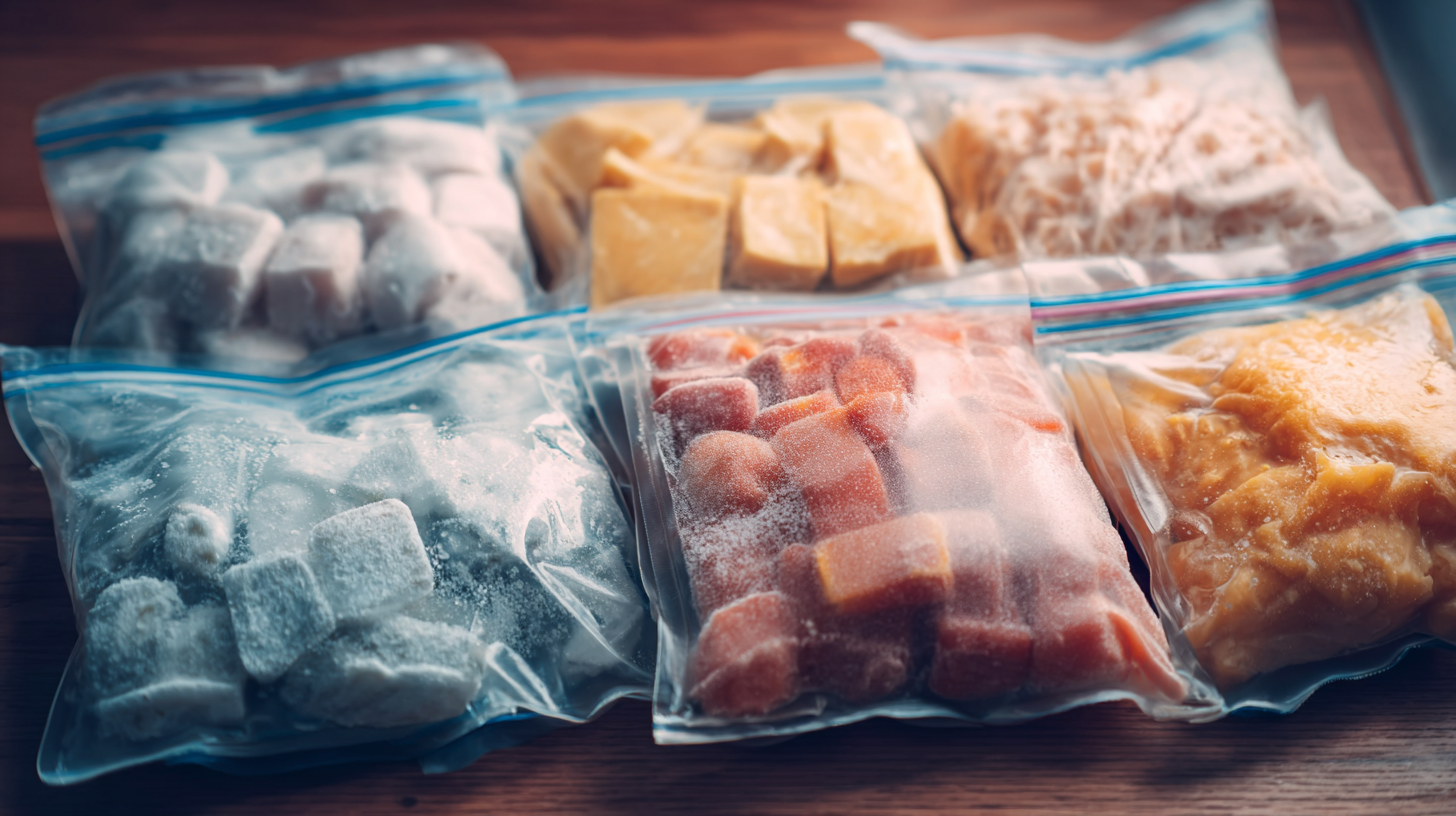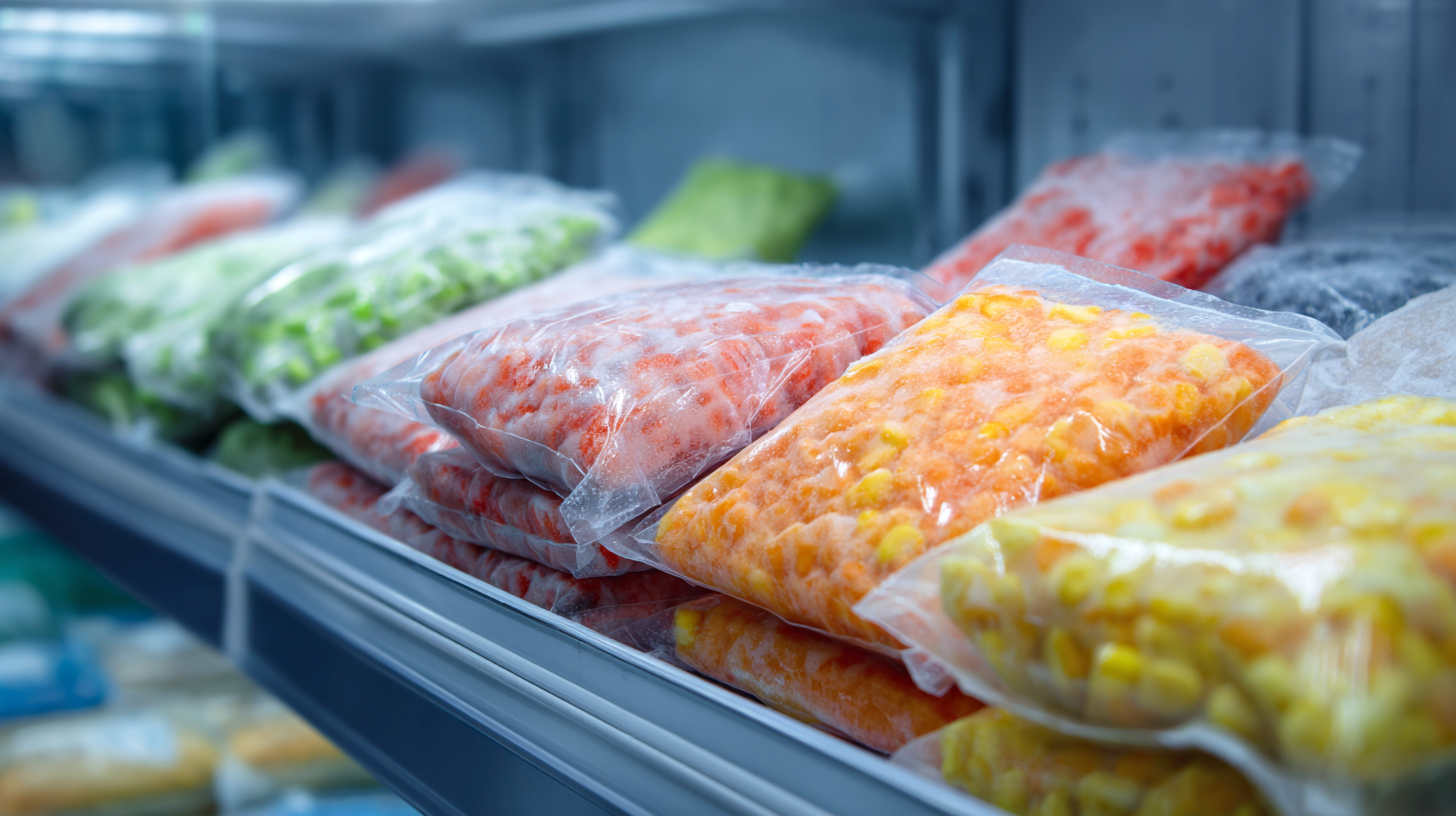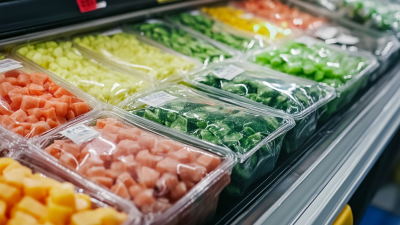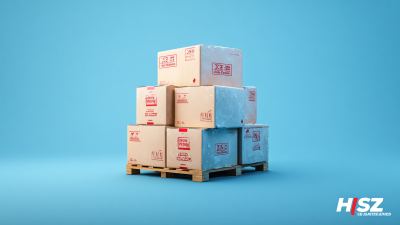The Ultimate Guide to Choosing the Best Frozen Food Bags for Your Needs
In an era where convenience meets quality, selecting the right Frozen Food Bags has become paramount for both consumers and businesses alike. According to a recent market research report by Mordor Intelligence, the global frozen food market is projected to reach approximately $500 billion by 2025, with a significant portion attributed to the growing demand for easy-to-store, high-quality frozen products. This surge highlights the importance of choosing durable and efficient frozen food storage solutions, as improper packaging can lead to freezer burn and spoilage, directly impacting product quality and customer satisfaction. Furthermore, a study by Packaging Strategies reveals that over 70% of consumers prioritize packaging that maintains freshness and quality. Therefore, understanding the key factors in selecting the best Frozen Food Bags tailored to individual needs is more vital than ever for ensuring optimal food preservation and enhancing the overall culinary experience.

Understanding Different Types of Frozen Food Bags Available on the Market
When selecting frozen food bags, it's essential to understand the different types available on the market to ensure your food stays fresh and safe. Among the most popular options are standard polyethylene bags, vacuum-seal bags, and heavy-duty freezer bags.
According to a recent industry report by Food Packaging Forum, the demand for vacuum-seal bags has surged by 15% in the past two years, reflecting their effectiveness in reducing freezer burn and extending the shelf life of frozen foods. These bags use air extraction technology, which not only preserves the quality of food but also saves space in your freezer.
Tips: When choosing frozen food bags, look for those labeled BPA-free to ensure safety. Additionally, consider investing in resealable bags for easy access and storage. Heavy-duty freezer bags are excellent for foods that have a longer freezing period, while lighter bags may suffice for short-term storage.
Another critical feature to consider is the thickness of the bag. Thicker bags, usually around 3-4 mils, provide better insulation and protect against punctures. The Frozen Food Foundation reports that proper packaging can prevent up to 30% of food waste in households. By understanding the pros and cons of each bag type, you can make an informed decision that suits your dietary needs and storage requirements.
Key Features to Look for in High-Quality Frozen Food Bags
When selecting high-quality frozen food bags, it’s essential to focus on several key features that can significantly impact their performance and durability. First and foremost, consider the material used in the packaging. Low-density polyethylene (LDPE) is a popular choice due to its flexibility, moisture resistance, and ability to protect food items from freezer burn. According to market reports, the global LDPE packaging market is projected to grow from $22.07 billion in 2025 to $29.69 billion by 2032, reflecting a compound annual growth rate of 4.33%. This growth underscores the increasing preference for materials that offer both functionality and sustainability in food preservation.
Another important feature to scrutinize is the sealing quality of the bags. High-quality frozen food bags should have airtight seals to prevent air and moisture from entering and compromising the freshness of the frozen contents. Look for bags that offer double-lock or zipper seals, which not only provide better protection but also make it easier to store and access your food without spills. Additionally, consider bags designed with thicker walls for enhanced puncture resistance and durability, ensuring that they can withstand the rigors of freezing without tearing or leaking. Prioritizing these features will help you choose the best frozen food bags tailored to your specific needs.

How to Choose the Right Size and Material for Your Frozen Food Storage
When selecting the ideal frozen food bags, understanding the appropriate size and material is crucial for effective food storage. Different sizes cater to various portions and types of food, from single-serving bags to larger ones fit for bulk items. Choosing the right size minimizes waste and maximizes space in your freezer, allowing for optimal organization and easy access to your frozen goods.

The material used in frozen food bags also plays a significant role in preservation. Common materials include polyethylene (PE) and polyethylene terephthalate (PET), each offering unique benefits. PE bags are flexible and resistant to stretch, making them suitable for a variety of food items. In contrast, PET bags provide better barrier properties against moisture and oxygen, extending the shelf life of your food. As the frozen food packaging market continues to grow, projected to reach $1221.5 billion by 2032, choosing the right packaging becomes increasingly important for both quality and sustainability.
Comparing Cost-Effectiveness: Reusable vs. Disposable Frozen Food Bags
When it comes to choosing the best frozen food bags, one key factor to consider is the
cost-effectiveness of
reusable versus disposable options. Reusable bags, often made from silicone or other
eco-friendly materials, can significantly reduce waste while proving to be more economical
in the long run. Purchasing a set of reusable bags might have a higher initial cost
compared to a pack of disposable bags, but their durability and ability to withstand
freezing and microwaving ensure that they can be used multiple times, ultimately saving money.
Tips:
To maximize savings, opt for silicone food storage bags that are
BPA-free and leak-proof. They not only allow for safe food
freezing but also aid in minimizing single-use plastic waste. Additionally, when purchasing bags,
look for options that offer multi-pack discounts or are on sale, further enhancing cost-effectiveness.
On the other hand, disposable bags can offer convenience, especially for those who
frequently switch between different types of foods or need bags for
single-use situations. However, the impact on the environment and increasing
plastic waste should be a consideration when weighing this option. Shifting to frozen
meals can also help households save money while cutting down on food waste,
a trend increasingly recognized by consumers looking for ways to improve their
budget and explore eco-friendly solutions.
Tips:
If you often find yourself needing quick meal prep solutions,
consider using disposable bags strategically for one-off freezing needs while
prioritizing the use of reusable bags for regular storage and meal planning.
Best Practices for Storing and Preserving Frozen Foods with Bags
When it comes to storing and preserving frozen foods, using high-quality bags is essential. The first step involves choosing bags specifically designed for freezing. Look for options made from heavy-duty materials that are puncture-resistant and have airtight seals. Freezer bags should also be thicker than regular storage bags to prevent freezer burn and ensure that your food stays fresh longer. It’s advisable to select bags that are marked as BPA-free, ensuring safety for your family.
Proper techniques for sealing and storing your frozen foods can enhance their shelf life significantly. Before sealing the bags, remove as much air as possible to minimize the risk of freezer burn. Using a vacuum sealer can be particularly effective in achieving an airtight seal. Additionally, label each bag with the contents and date of freezing, which helps in managing your inventory and prevents food waste. For optimal storage, arrange bags in a single layer for quick freezing; this will help maintain food quality during storage. Following these best practices can ensure that your frozen foods remain delicious and nutritious for months to come.
Related Posts
-

What Are Frozen Food Bags and How Do They Revolutionize Food Storage?
-

10 Surprising Benefits of Using Frozen Food Bags for a Healthier Kitchen
-

Top 10 Manufacturers of Frozen Food Bags in China at the 137th Canton Fair
-

Top Strategies for Selecting the Most Efficient Frozen Food Shipping Solutions
-

Chinese Manufacturing Elevates Global Standards Through Best Frozen Food Shipping Boxes
-

Solutions for Streamlined Frozen Food Shipping Boxes: Boosting Efficiency and Freshness

 中国
中国